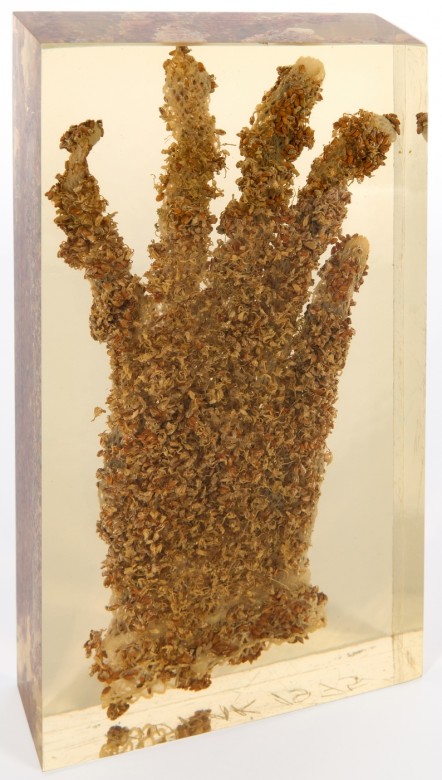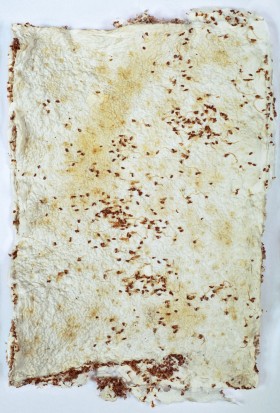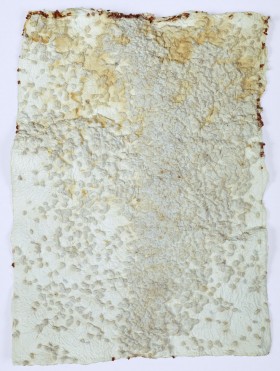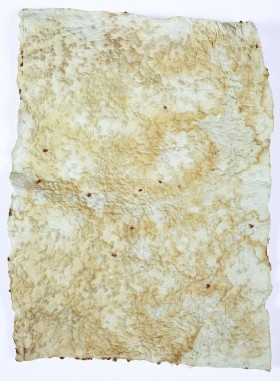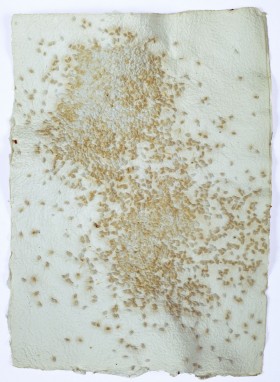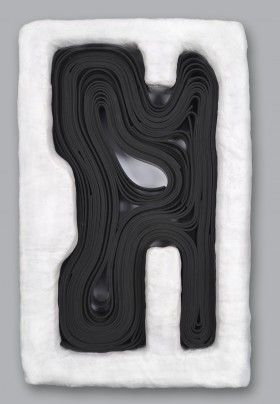Form
- type of object: sculpture
- date: 1975
- material/technique: cotton glove, cress seeds, polyester resin
- dimensions: 10,5 x 20 x 4 cm
- inventory No.: RZ-99
- image licensed under: CC BY-NC-ND 3.0
Teresa Murak first sowed garden cress in 1972. At Easter time, it is sowed on, among others, a piece of cellulose wadding, and its rapid growth symbolises the ability of nature to renew itself and bloom in springtime. The artist covered various pieces of clothing with cress seeds and presented them in her exhibitions. Next, she embedded some of them in polyester resin. Art critic Elżbieta Monika Małkowska wrote about them: ‘Embalmed like excavated insects or grasses in tree resin, the immortal cress stalks and leaves remain forever green in transparent, cuboidal sarcophagi’.
The results of the artist’s performances were usually fleeting, fulfilling the neo-avant-garde postulate of identifying life — in this case the vegetation of a plant — with the creative process. However, in the case of Form, a permanent object was created, like a freeze-frame in the process of development and decay of the unassuming seeds. This and other pieces by Murak fit into the circle of Judeo-Christian and pagan references that are important to her. As curator Sebastian Cichocki wrote, ‘The action of seed sowing becomes a meditation or a prayer. The individual sprouting plants are letters, creating a puzzling, unreadable, constantly falling apart and mutating text inscribed in the urban tissue. The action of writing on the earth using seeds is for the artist an act of faith, a gift, and a submission to the laws of nature and higher forces’.
Ewa Skolimowska, translated by Paulina Bożek
